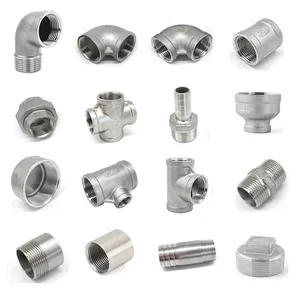

Stainless Steel 304 Outer Wire Joint External Thread Direct Head Pipe Fittings Nipples Plumbing Materials Hex Plug With Nut


High Pressure Parker 43 Series 13943 U.S. JIC 37 One-Piece Crimp Hose Fitting For 1SN/2SN Hose Snap-Fit 45 Degree Bend 26791Y






















Pipe fitting crossovers are integral components in the construction of complex piping systems. These fittings are designed to bridge and connect intersecting pipelines efficiently, ensuring a seamless flow of fluids. They are essential in both commercial and residential plumbing, adapting to various applications and environments.
The choice of material for a pipe fitting crossover is critical and is typically dictated by the fluid it will transport. For instance, CPVC cross over bends are favored for their high temperature tolerance and resistance to chemical corrosion, making them suitable for industrial applications. In contrast, 15mm copper pipe crossovers are prevalent in scenarios where durability and corrosion resistance are paramount, such as in underground plumbing systems.
The application of a crossover tee plumbing fitting is diverse, ranging from heating systems to water supply networks. Features such as the smooth inner walls of PVC crossovers reduce flow resistance, enhancing efficiency. Meanwhile, the lightweight nature of CPVC cross over fittings makes them easy to handle and install without compromising on strength or thermal stability.
Each material brings its own set of advantages to the table. The 15mm crossover pipe, often made from copper, offers exceptional resistance to bacteria and can withstand extreme conditions, making it a reliable choice for long-term use. On the other hand, plastic variants like PVC and CPVC are cost-effective and offer excellent resistance to a wide range of chemicals, presenting a versatile solution for various piping needs.
Beyond the crossovers themselves, other components such as P-traps and pipe caps play crucial roles in the functionality and safety of piping systems. P-traps, for instance, are essential for maintaining hygiene and preventing odors, while pipe caps are used to seal the end of pipes, preventing contamination and preserving the integrity of the system.
Selecting the appropriate pipe fitting crossover is a nuanced process that involves understanding the specific requirements of the piping system. Factors such as fluid type, pressure, environmental conditions, and regulatory compliance must all be considered to ensure the crossover fitting integrates seamlessly and performs optimally within the system.